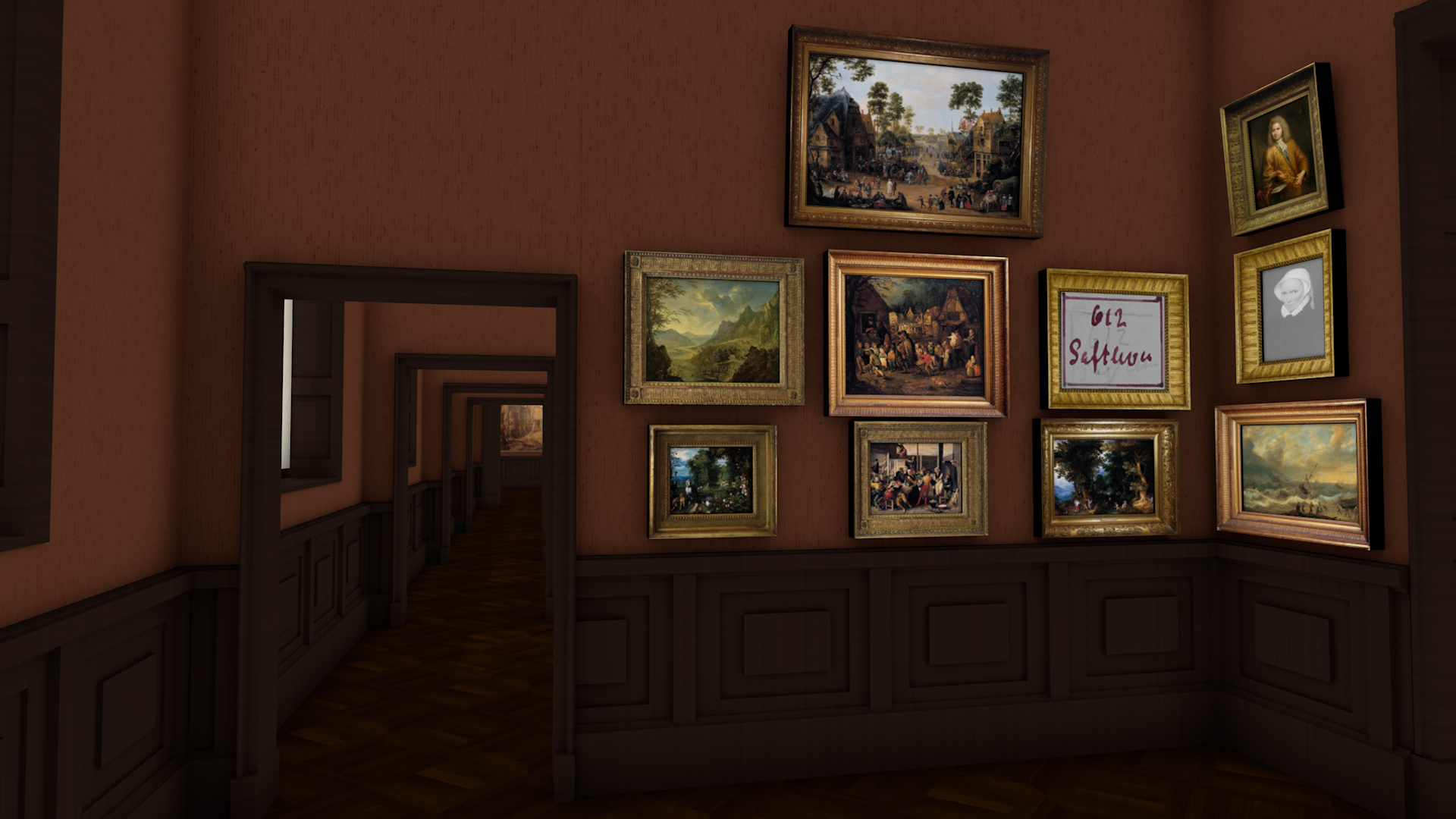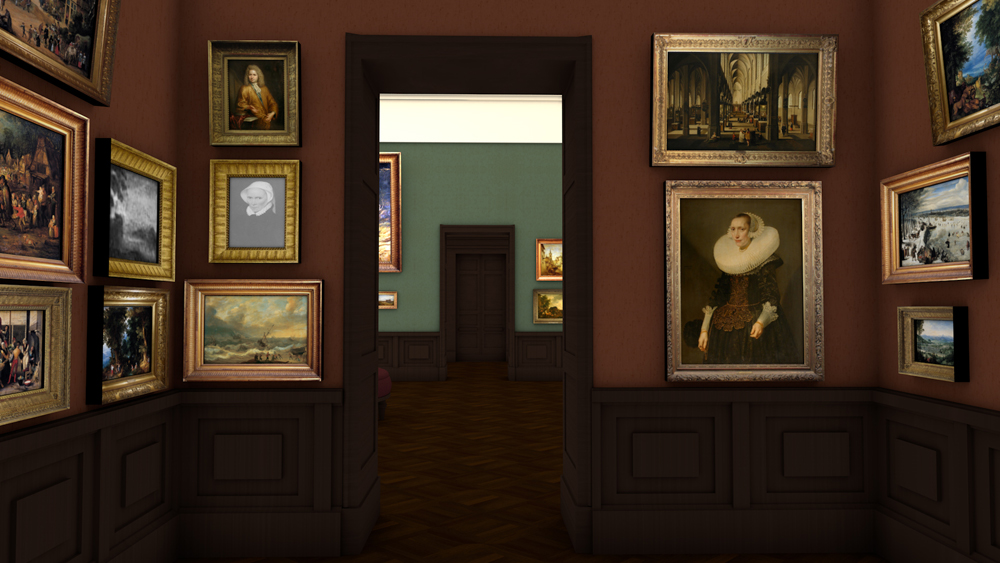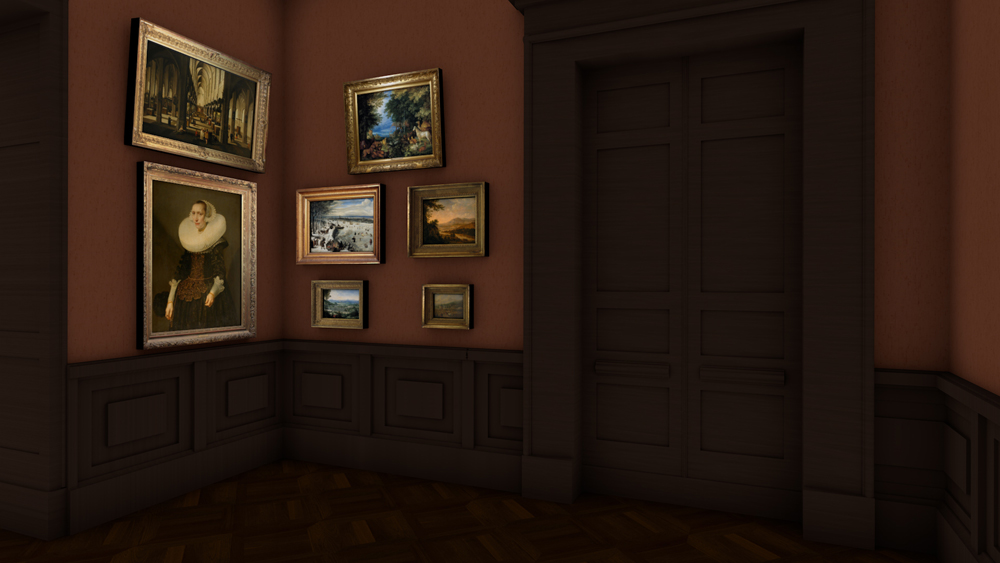1878 Cabinet 6
Comparative
viewing
The sixth cabinet was directly connected to the large skylight room with contemporary paintings. Yet, like all of the remaining cabinets, it still featured art pre-dating 1800. In a special way, viewers here had the possibility to practice comparative viewing and learn about Dutch and Flemish art history.
The Flemish landscapes were dominant. Lucas van Valckenborch’s cityscapes of Linz and Antwerp, and the colour-intensive landscapes with history scenes by Jan Brueghel and Roelant Savery, were presented together with views of the Rhine by the Dutchman Herman Saftleven. The latter artist had been active during the late seventeenth century and used a different visual language than the aforementioned Flemings: the atmosphere created by him through light unify his wide panoramas and sometimes give them a southern, and at other times a northern character.
In the centre of the main wall on the left, the preceding history and subsequent development of the crude peasant genre was visualised: from the “Brothel Scene” of ca 1540 by the anonymous Antwerp artist today known as the “Braunschweig Monogrammist” in the lower register, and the “Peasant Fair” from the first half of the seventeenth century attributed to “Daniel Vinck-Boons”, to Stalbemt’s “Village Church Festival” from the mid-seventeenth century.
The arrangement of the portraits on the entrance side of the room gives an impression of arbitrariness, but it likewise provided the visitor the opportunity to understand the development of portrait painting over a period of more than a century.

Eventhough director Malß had changed the designation of the room from VI to III, the presentation could not have been executed in the third cabinet: the end wall of that room featured no door.
Basis
for the reconstruction
Städel director Gerhard Malß had changed the hanging plans for Cabinets 3-6, which were supposed to mainly feature seventeenth-century Dutch and Flemish paintings, a number of times. In the process, he changed the numbering of the rooms in such a manner that the presentation designs cannot easily be transferred from one room to the other.
The sketched architecture occasionally deviates from the actual rooms as well, as is also the case among the other hanging plans. This further complicates the interpretation of our sources.
That is why, for the reconstruction presented here, we have decided to ignore the renumbering of the rooms. In the case of Cabinet 5, we have also swapped the paintings on the two short walls, as only then the actual size ratios of the walls and the doors match. This occasional free handling of the visualisations is justified insofar as there is hardly any substantive reasoning behind the order of the cabinets. In the recreated version, however, the focus has lightly shifted. From landscape painting, which is placed rather low in the hierarchy of art genres, one passes peasant genres and domestic figure pieces to arrive at the more prestigious portraits and history paintings. In the individual cabinets, the visitor was able to deduce the respective theme through comparative viewing, while the use of symmetrical pendants on the one hand, and variation on the other, constituted the leading aesthetic principles.





